Abstract
The levels of glutamine synthetase (GS) and glutamate dehydrogenase (GDH) in Chlorella autotrophica (clone 580) are strongly regulated by the nitrogen source and salt concentration of the medium. GS is present at high levels in NO3−-grown cells, and at maximum levels in nitrogen-starved cells. However, the levels of GS in these cells are somewhat decreased by increasing salinity. Cells growing on NH4+ have high NADPH-GDH activity, the levels of which increase with increasing NH4+ supply, while GS decreases to a very low level under these conditions. Salinity intensifies the induction of NADPH-GDH activity in NH4+-grown cells. The levels of NADH-GDH are low in this alga, but present under all growth conditions. Methionine sulfoximine (MSX) has little effect on growth and nitrogen assimilation of the alga in the presence of NH4+.
Full text
PDF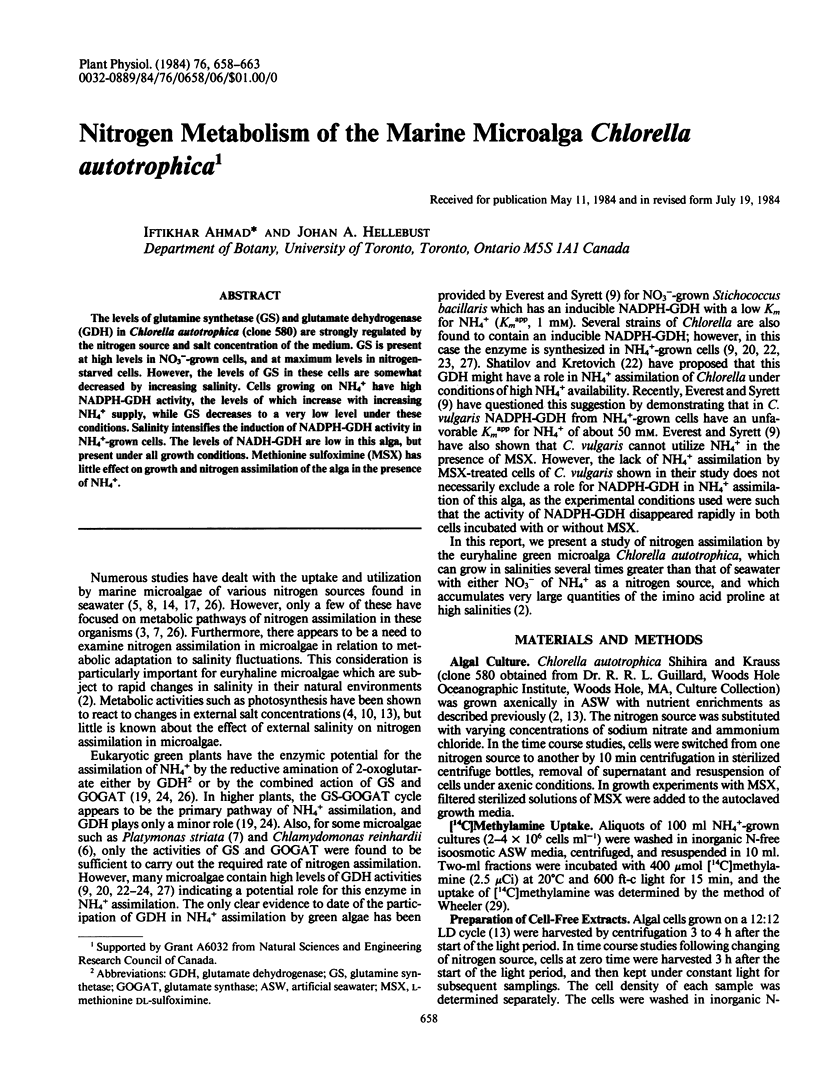
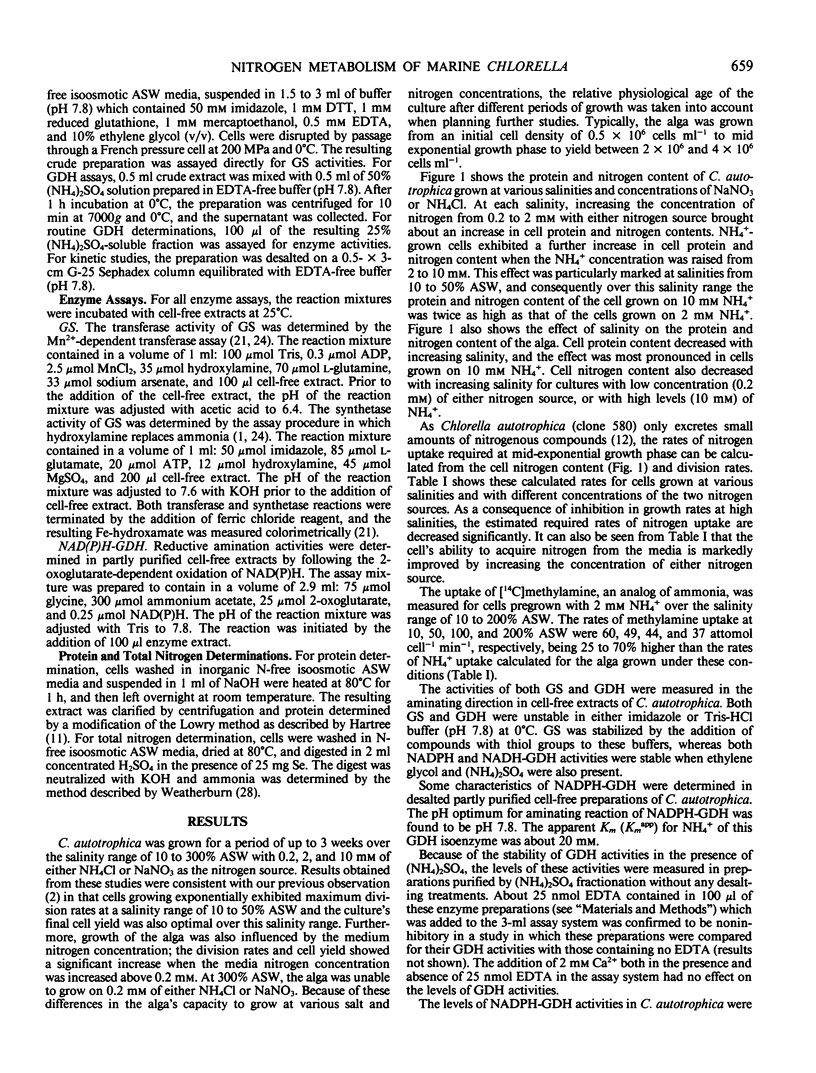
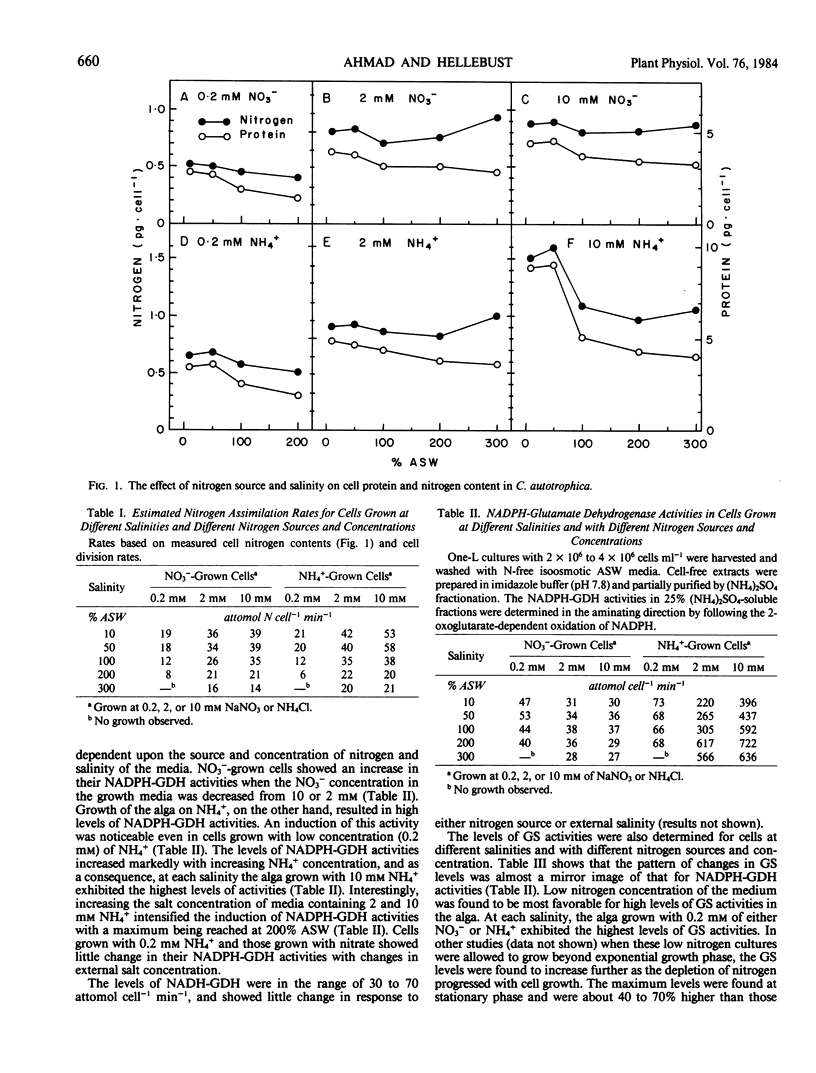
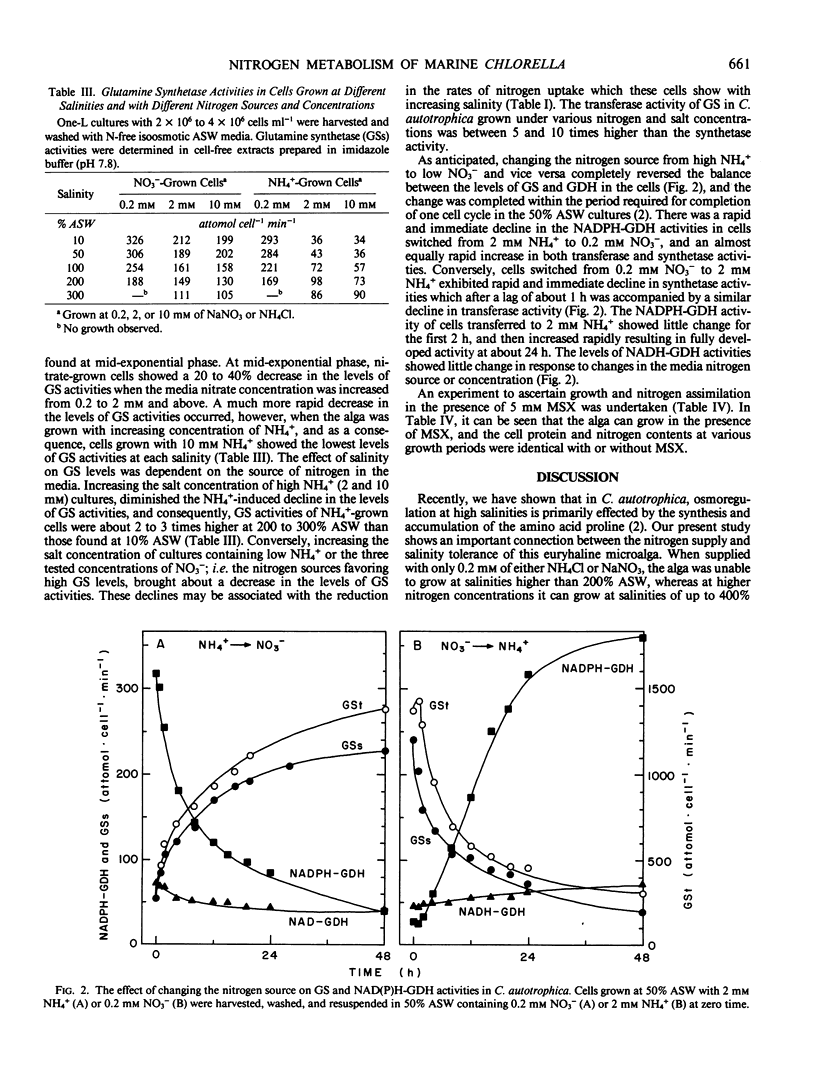

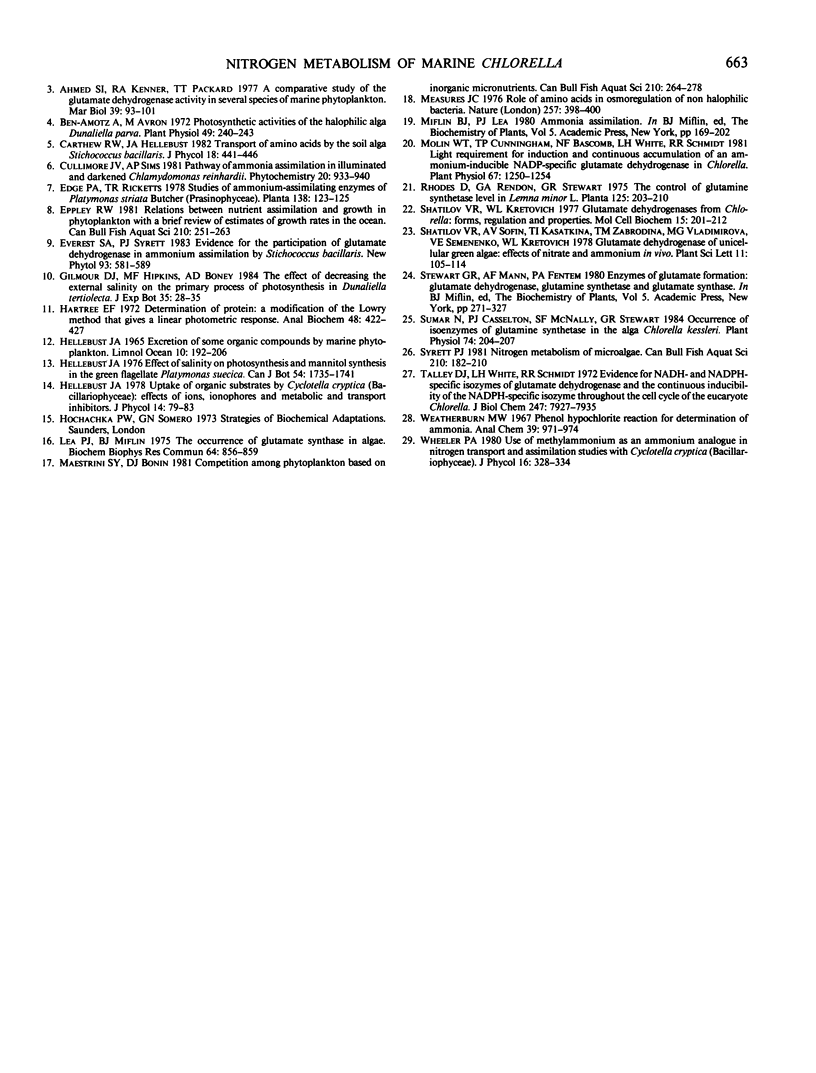
Selected References
These references are in PubMed. This may not be the complete list of references from this article.
- Ahmad I., Hellebust J. A. Osmoregulation in the Extremely Euryhaline Marine Micro-Alga Chlorella autotrophica. Plant Physiol. 1984 Apr;74(4):1010–1015. doi: 10.1104/pp.74.4.1010. [DOI] [PMC free article] [PubMed] [Google Scholar]
- Ben-Amotz A., Avron M. Photosynthetic Activities of the Halophilic Alga Dunaliella parva. Plant Physiol. 1972 Feb;49(2):240–243. doi: 10.1104/pp.49.2.240. [DOI] [PMC free article] [PubMed] [Google Scholar]
- Hartree E. F. Determination of protein: a modification of the Lowry method that gives a linear photometric response. Anal Biochem. 1972 Aug;48(2):422–427. doi: 10.1016/0003-2697(72)90094-2. [DOI] [PubMed] [Google Scholar]
- Lea P. J., Miflin B. J. The occurrence of glutamate synthase in algae. Biochem Biophys Res Commun. 1975 Jan 2;64(3):856–862. doi: 10.1016/0006-291x(75)90126-6. [DOI] [PubMed] [Google Scholar]
- Measures J. C. Role of amino acids in osmoregulation of non-halophilic bacteria. Nature. 1975 Oct 2;257(5525):398–400. doi: 10.1038/257398a0. [DOI] [PubMed] [Google Scholar]
- Molin W. T., Cunningham T. P., Bascomb N. F., White L. H., Schmidt R. R. Light requirement for induction and continuous accumulation of an ammonium-inducible NADP-specific glutamate dehydrogenase in chlorella. Plant Physiol. 1981 Jun;67(6):1250–1254. doi: 10.1104/pp.67.6.1250. [DOI] [PMC free article] [PubMed] [Google Scholar]
- Shatilov V. R., Kretovich W. L. Glutamate dehydrogenases from Chlorella: forms, regulation and properties. Mol Cell Biochem. 1977 May 3;15(3):201–212. doi: 10.1007/BF01734109. [DOI] [PubMed] [Google Scholar]
- Sumar N., Casselton P. J., McNally S. F., Stewart G. R. Occurrence of Isóenzymes of Glutamine Synthetase in the Alga Chlorella kessleri. Plant Physiol. 1984 Feb;74(2):204–207. doi: 10.1104/pp.74.2.204. [DOI] [PMC free article] [PubMed] [Google Scholar]
- Talley D. J., White L. H., Schmidt R. R. Evidence for NADH- and NADPH-specific isozymes of glutamate dehydrogenase and the continuous inducibility of the NADPH-specific isozyme throughout the cell cycle of the eucaryote Chlorella. J Biol Chem. 1972 Dec 25;247(24):7927–7935. [PubMed] [Google Scholar]


